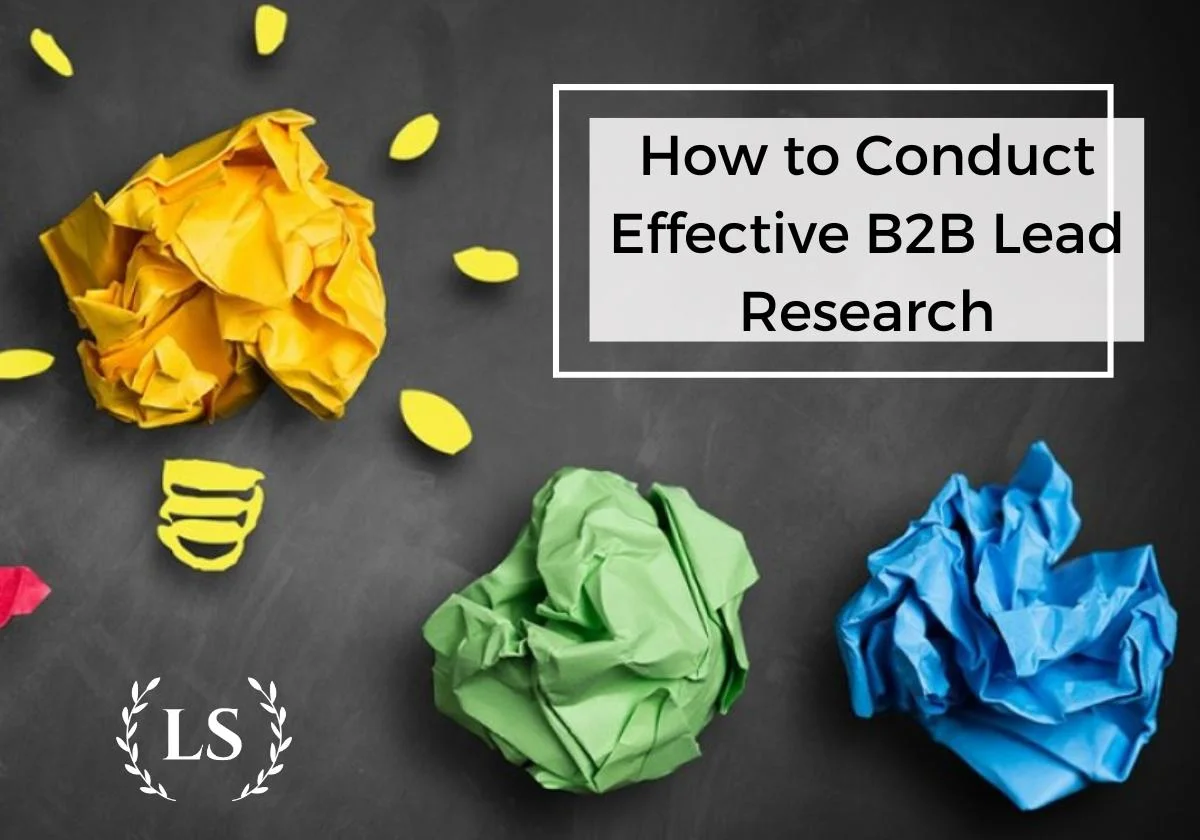How to Conduct Effective B2B Lead Research

In the ever-evolving world of B2B marketing, lead generation is the lifeline of businesses. The success of your B2B lead generation efforts hinges on the quality and relevance of your leads. To achieve this, you need to master the art of conducting effective B2B lead research. In this comprehensive guide, we’ll take you through the step-by-step process of conducting B2B lead research to supercharge your lead generation efforts.
Why Effective B2B Lead Research Matters
Before diving into the “how,” let’s understand the “why.” Effective B2B lead research is essential because it helps you:
Identify Your Ideal Customers: B2B lead research allows you to pinpoint your ideal customer profiles, ensuring that your efforts are focused on prospects who are more likely to convert.
Customize Your Approach: Armed with data from lead research, you can tailor your outreach, messaging, and content to address the specific needs and pain points of your target audience.
Increase Conversion Rates: By reaching out to leads who align with your products or services, you significantly enhance the chances of converting them into paying customers.
Optimize Resource Allocation: Efficient lead research enables you to allocate your resources wisely by concentrating on leads with the highest potential ROI.
Now, let’s explore the steps to conduct effective B2B lead research:
Step 1: Define Your Ideal Customer Profile (ICP)
Start by defining your Ideal Customer Profile (ICP). Your ICP includes criteria such as industry, company size, location, and job titles of decision-makers. Knowing your ICP is crucial because it serves as a compass for your research.
Step 2: Utilize Online Databases and Directories
There are numerous online databases and directories at your disposal. These resources contain valuable information about businesses, including contact details, company descriptions, and industry categorizations. Some popular databases include LinkedIn, ZoomInfo, and Hoovers.
Step 3: Leverage Social Media
Social media platforms are treasure troves of data. Platforms like LinkedIn, Twitter, and industry-specific forums provide insights into a company’s activities, interests, and pain points. Use these platforms to gather valuable information about your potential leads.
Step 4: Automate Data Collection
To streamline the research process, consider using automation tools. Automation can help gather and organize data efficiently, saving you time and ensuring accuracy.
Step 5: Data Validation and Enrichment
Accurate data is paramount. Validate and enrich your data by cross-referencing it with multiple sources. Services like data enrichment tools or APIs can help fill in gaps and ensure data accuracy.
Step 6: Segment Your Leads
Segment your leads based on the criteria you’ve defined in your ICP. This segmentation allows for more personalized and effective outreach strategies.
Step 7: Craft Personalized Messages
Armed with well-researched data, create personalized messages tailored to the specific needs and pain points of each segment. A customized approach significantly increases response rates.
Step 8: Track and Analyze Results
Implement tracking and analytics tools to monitor the performance of your lead research efforts. This data will help you refine your strategies and continually improve your lead generation process.
Step 9: Iterate and Refine
B2B lead research is an ongoing process. Continuously iterate and refine your strategies based on the feedback and results you receive. Stay updated with changes in your target industries to remain relevant.
In conclusion, mastering effective B2B lead research guide is the key to unlocking your business’s full potential. By following these steps and embracing data-driven insights, you can supercharge your lead generation efforts, increase conversion rates, and maximize your ROI. Start today, and watch your B2B business thrive with well-researched, high-quality leads.







